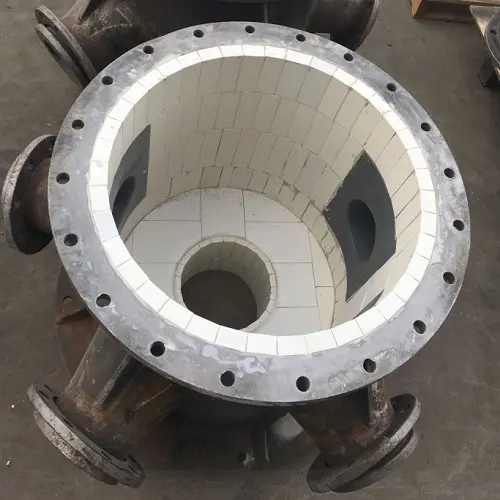
Principle of Powder Sintering for Alumina Ceramics:
Powder sintering is a vital process in the production of alumina ceramics, where the principle involves using alumina powder to form a compact structure. The key steps include:
Powder Formation: High-quality alumina powder is crucial for the success of the sintering process. This powder typically consists of fine particles with controlled characteristics. The choice of powder affects the final properties of the ceramic, including its hardness and chemical stability.
Compaction: The alumina powder is compacted into the desired shape or form. This can be done through various techniques such as dry pressing, isostatic pressing, or injection molding, depending on the specific requirements of the ceramic product.
Heating Below Melting Point: The compacted alumina is then heated below the melting point of alumina, which is 2054°C. Powder sintering allows the material to achieve the necessary strength and characteristics through physical and chemical interactions, including particle bonding.
Sintering Temperature Control: Although the melting point of alumina is significantly higher, the use of powder sintering technology allows the sintering to occur at a lower temperature, typically around 1700°C. This controlled temperature promotes the formation of alpha-alumina with stable chemical properties and high hardness, meeting the requirements for wear-resistant ceramics. Lowering the sintering temperature also helps in reducing resource and cost consumption.
Factors Affecting Product Quality in Powder Sintering:
Powder Quality: The quality of alumina powder significantly influences the final ceramic product. Using high-quality imported powder and implementing strict control measures during the powder production process enhance the ceramic's overall quality.
Sintering Furnace: The choice and quality of the furnace are critical in the sintering process. Different types of furnaces are required to meet various ceramic sintering requirements, ensuring the control of temperature and atmosphere during the process.
Sintering Additives: Additives are introduced to aid the sintering process. Developing unique additive formulas, along with employing specific sintering techniques, ensures stable ceramic quality and desirable properties in the final product.
In conclusion, powder sintering, especially for alumina ceramics, is a precise process that demands attention to powder quality, furnace selection, and the use of effective sintering additives. Continuous research and meticulous attention to detail are essential for consistently improving the quality of ceramics produced through powder sintering technology.

Submit your demand,
we will contact you ASAP.

Sanxin New Materials Co., Ltd. focus on producing and selling ceramic beads and parts such as grinding media, blasting beads, bearing ball, structure part, ceramic wear-resistant liners, Nanoparticles Nano Powder

